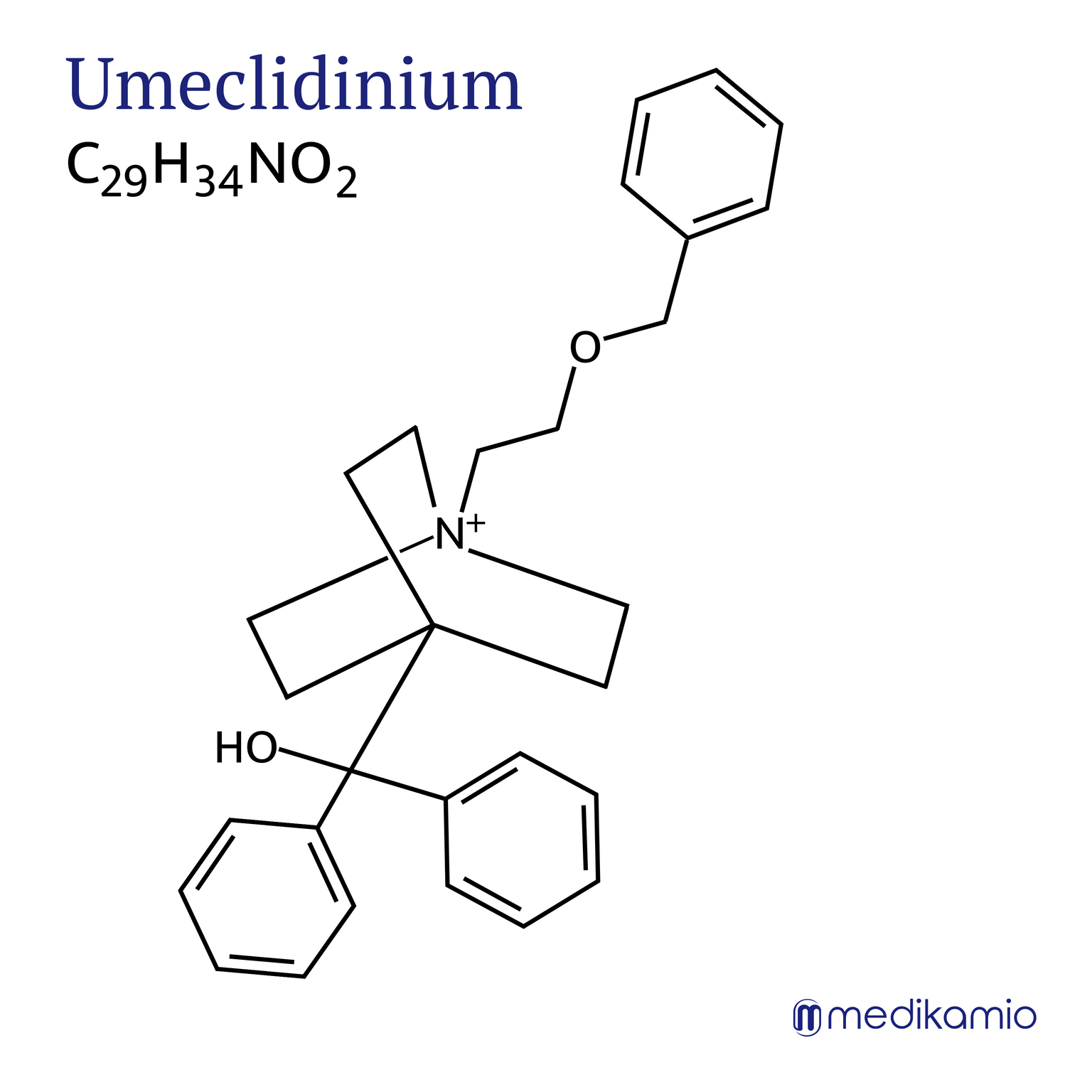Effect
Umeclidinium bromide acts on the muscarinic receptors of the smooth muscles of the respiratory tract. It is a competitive antagonist and neutralizes the effects of acetylcholine there. Respiratory movements are controlled by the parasympathetic nervous system, which is activated by acetylcholine, resulting in a bronchodilator effect. Umeclidinium bromide mainly acts on the muscarinic 3 receptors (M3) and blocks the receptors there so that acetylcholine can no longer bind and therefore cannot exert its effect. As a competitive antagonist, the concentration of umeclidinium bromide must be greater than that of acetylcholine.
Acetylcholine acts by activating the M3 receptor. This activates the enzyme phospholipase C, which forms inositol 1,4,5-trisphophate, which in turn releases calcium into the cell. Calcium then triggers muscle contractions, which exacerbate the symptoms of COPD.
Umeclidinium bromide is broken down in the liver via the enzyme CYP2D6 and is excreted almost exclusively via faeces. The bioavailability, i.e. the percentage of the active substance available in the blood, is 13% on average. The half-life, i.e. the time the body needs to excrete half of the active substance, is approx. 11 hours. The maximum plasma concentration (Cmax), i.e. the maximum concentration of the active substance in the blood plasma (liquid cell-free part of the blood), is reached after 5-15 minutes.



